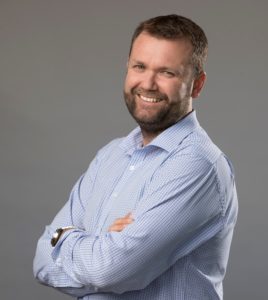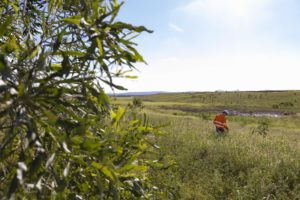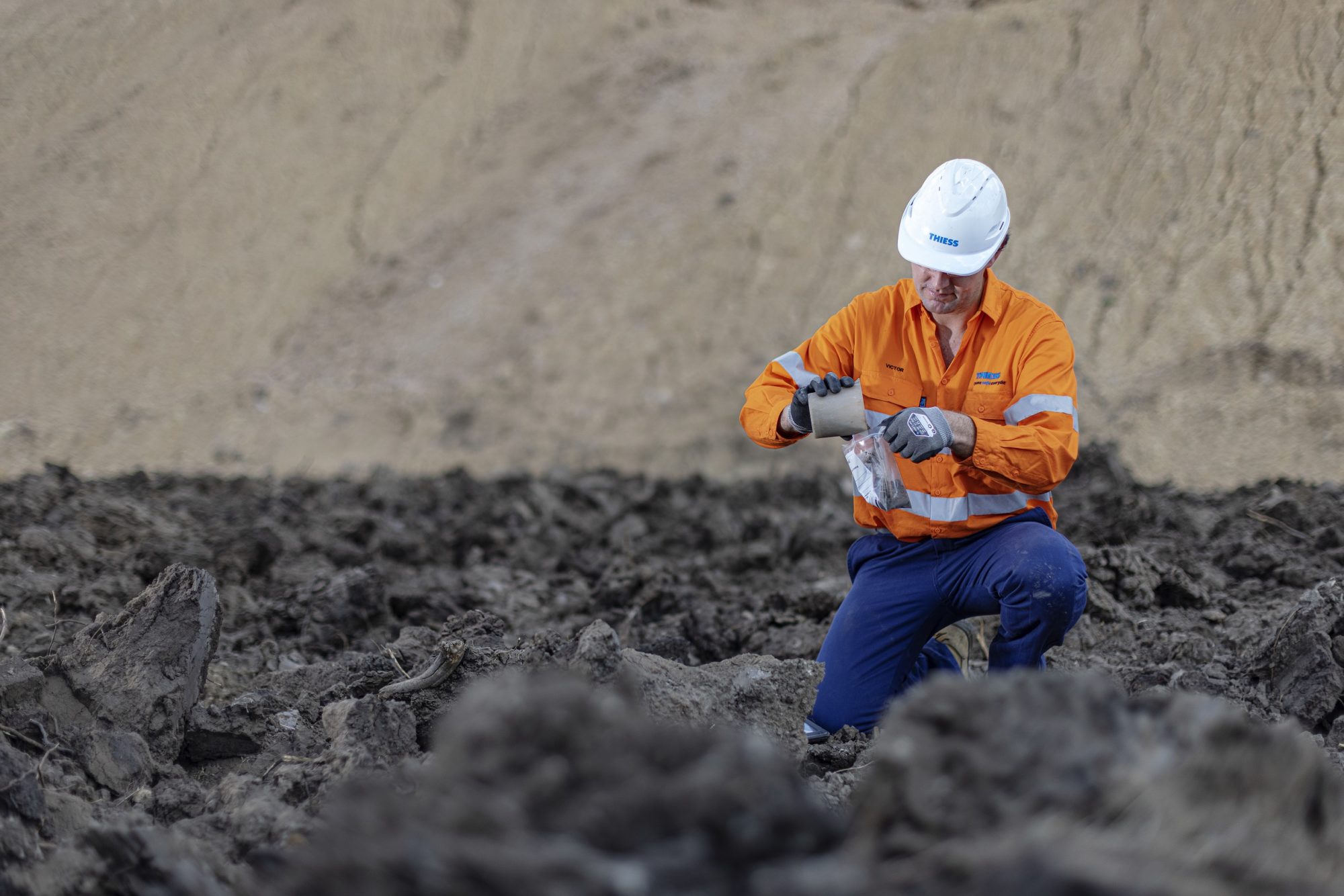Global mining services provider Thiess has been providing mine rehabilitation services to its clients for over 20 years. However, recognising the value of this specialist service to the market – to both existing and prospective clients – it established its mine rehabilitation company, Thiess Rehabilitation, in March 2022.
IM Editorial Director Paul Moore sat down with Thiess Rehabilitation Group Manager, James Anderson, at the IMARC conference in Sydney in November 2022, to further understand the value Thiess Rehabilitation’s approach to mine rehabilitation can and is bringing to the mining sector.
James Anderson, Thiess Rehabilitation Group Manager

One of Thiess Rehabilitation’s unique strengths is that it delivers mine rehabilitation services by miners, who are also environmental experts. Capitalising on this multi-skill set, the team assesses, designs, develops and delivers tailored, strategic rehabilitation solutions with flexibility in process and equipment.
Some of the factors that influence clients looking to Thiess Rehabilitation include the team’s experience using best-practice methods in landform design optimisation, its in-depth understanding of regulatory requirements and emerging industry trends in rehabilitation, and innovation, such as efficient material movement, autonomy for bulk reshaping and use of high-precision drones.
While established as its own specialist entity, Thiess Rehabilitation’s team also draws on access to the wider capabilities across the Thiess business, including environmental and civil engineering, landform design, advanced surveying, asset management and maintenance.
“Clients can draw on our full suite of rehabilitation services in design, development and delivery. One of our focuses is to optimise inputs and outcomes for our clients, from optimising rehabilitation designs and operational schedules, to identifying efficiency gains and equipment utilisation options, to exploring alternative design options and offering flexible contract terms,” Anderson told IM.
Thiess Rehabilitation offers efficient deployment of fleet for any rehabilitation campaign, industry-leading, rigorous quality control processes and multi-region insights and knowledge sharing that drives results, without the research and development costs.
This means reduced demand and distraction for clients’ in-house resources, freeing them to focus on their core business. Also, as plans change – for example, mines may discover new orebody extensions – working with Thiess Rehabilitation allows greater flexibility in the ramp up/down of works, with agile access to personnel, plant and equipment. Thiess also has Indigenous engagement experience, to develop tailored programs and strategic partnerships and relationships with local Traditional Owners, that help support site-specific value.
Anderson told IM: “Thiess is a mining services provider and as part of that we have always provided mine rehabilitation services to our clients. That includes more than 10,000 ha of rehabilitation both in Australia and Indonesia, over 20 years. The natural evolution was to launch in March 2022 Thiess Rehabilitation, a stand-alone service offering where a client can come to us directly with a mine rehabilitation project. Importantly, that could either be a mine for which we are providing mining services or a new rehabilitation project.”
Former mining area restored by Thiess at Lake Vermont
He says that it is seeing a lot of clients with an initial design for a rehabilitation project “but they want us to do the detailed, costed design. Hopefully we then move forward with them to execution, monitoring and measurement phases. Increasingly, clients are seeing the value in working with us as an all-inclusive, full-service provider that doesn’t require separate consultants and earthmoving contractors. We can design it and cost it based on our experience, and because of the extensive fleet of equipment we have in house, we can carry out the work.”
Under a traditional model, an environmental consultant would come up with a design plan, which would pass to a civil contractor for costing, and potentially execution, which means dealing with multiple teams and parties. “With us, you have a principle Thiess Rehabilitation project manager dedicated to your project who has access to people and assets that can perform all of these functions.”
Regional experience
Thiess also has unique regional experience. “Projects everywhere have their own unique challenges when it comes to rehabilitation – in Australia, you have an exacting regulatory environment with ever-changing expectations plus unpredictable climatic extremes. Indonesia’s challenges include the sheer amount of water you have to deal with in the wet season – more than two metres of rainfall a year. That has to be managed during construction, but you also have to make sure you are building landforms that are designed for long-term success without susceptibility to erosion and landslides.”
And there are new regions that are prime for evolution of rehabilitation scope. There is a lot of potential to build the business in North America, for example, where Thiess has its new base in Salt Lake City. Anderson spent a month there in March 2022 exploring opportunities.
The interest in high-quality mine rehabilitation (or reclamation, as it is known in the US) services is increasing across that region. Miners in the US market more commonly engage smaller contractors to deliver short-term rehabilitation contracts, or self-perform rehabilitation scope, making Thiess Rehabilitation’s specialty in progressive, long-term campaigns a point of difference for clients. Also, the potential is not just with current mines; there are a lot of large-scale, abandoned and long-closed mining areas, including US EPA Superfund sites, which require a long-term response to clean up contaminated land.
Rehab as an opportunity
Mine owners globally have a huge rehabilitation liability – estimated to be in the hundreds of billions. Thiess Rehabilitation believes that mining needs to take a longer-term, strategic view. If anything, Anderson argues that biodiversity is charting the same path as emissions did five years ago.
It is emerging as a significant ESG pillar. There is increasing pressure for ‘nature positive’ outcomes. Rehabilitation is also a liability on the balance sheet that must be addressed. But, rather than an obligation, Anderson says rehabilitation should be seen as an opportunity.
“By employing smart rehab solutions you can achieve significant wins, from using the space to install renewable generation like solar farms, to pumped storage hydro, and alternative land uses like grazing, cropping, forestry and ecotourism.”
Another major trend is mimicking natural landforms. If this is done right, and just as importantly, started early, it can be really cost effective. Anderson named Mt Pleasant as a great example- a client coal mine just outside Musswellbrook in New South Wales in the Hunter Valley.
“Working with our client, MACH Energy, since 2018, we have looked to mimic the local landscape so in years to come, it will blend in well with the natural surroundings. It started with tipping material in a way to allow for that landform, shaping it with dozers, then using dozer pushing down to establish drainage lines and habitat features. Today you can’t really see where the natural area stops and the new landform begins.”
Projects and performance
At Mt Owen, another major coal mine in the Upper Hunter Valley, operated by Glencore Australia, the client is playing the long game, and has worked with Thiess to implement progressive rehabilitation with annual campaigns. A 27-year investment has already paid ESG dividends for Glencore as it has taken an industry-leading position and delivered nature positive outcomes.
Following its launch in March, Thiess Rehabilitation was awarded its first contract in July, a 3.5-year partnership with Idemitsu Australia’s Ensham Resources, to deliver mine rehabilitation solutions that create areas for native bushland corridors and cattle grazing across more than 700 hectares of land.
Working with the client at the Ensham Mine, east of Emerald in Queensland, Australia, the scope of works includes the detailed design and construction of the final rehabilitated landforms across two of their completed pits, following by topsoiling and seed bed preparation, and sowing of both pasture and native tree species. The team is applying industry-leading landform design methodologies, as well as innovative technology for surveying and seeding to deliver the project.
Anderson said the contract at the Ensham Mine was a fitting way to mark Thiess Rehabilitation’s first project as a standalone business. “We’re really excited to work with Idemitsu’s Ensham Resources, who have already achieved more than 660 hectares of progressive rehabilitation at the mine. We share an understanding that mining is about value, and that value is fully realised when we return the land to a sustainable and usable state. We’re looking forward to bringing our whole-of-mine-life insight to design, develop and deliver solutions to meet the needs of our clients and leave a positive legacy.”
In July 2022, Thiess also announced it had exceeded the 2021 rehabilitation hectare target at Kaltim Prima Coal’s Sangatta mine in East Kalimatan, Indonesia, where Thiess provides ongoing mine rehabilitation services.
Ongoing rehabilitation at KPC Sangatta in Indonesia

“Aligned with life-of-mine services, rehabilitation management at Sangatta involves planning and design, material testing and encapsulation, and bulk earthworks. Our team has achieved outstanding results, while addressing acid mine drainage challenges, using rigorous material management and quality assurance. Innovative rehabilitation design and water management solutions, including using tyres for drainage, ensure the long-term safety and stability of rehabilitated areas in a high-rainfall environment. Re-contouring was carefully staged for slope stability and topsoil preparation was designed to increase infiltration and control erosion.”
Thiess exceeded expectations in meeting the 452-hectare target in 2021 – more than double the 2020 rehabilitation target. “Our services included land reshaping, soil spreading and soil ripping under challenging geotechnical conditions and during periods of high rainfall. Further, some of the soil dumps had potentially acid forming (PAF) properties that exceeded allowable values set by our client. These areas required special treatment and additional compacting.”
In-house fleets
Anderson also says it is a significant advantage to have an in-house fleet and use it effectively. “We know the optimal type of machines to use and we have everything we need in house so it is just a matter of linking in with our assets department to get accurate rates for the machines and organise the logistics to get it there – this gives the client certainty of delivery and cost accuracy.”
There is also a role for automation in mine rehabilitation projects. Anderson says, “Autonomous dozing in particular fits nicely with rehabilitation in mining. The rehab area is segregated from the rest of the mine so there is little interaction with other machines, making the autonomous zone very easy to set up. Thiess has a focus on dozer push in our rehab designs as it remains the most cost-effective way to build new landforms. Linking our design to an autonomous dozer is very much where we are heading.”











